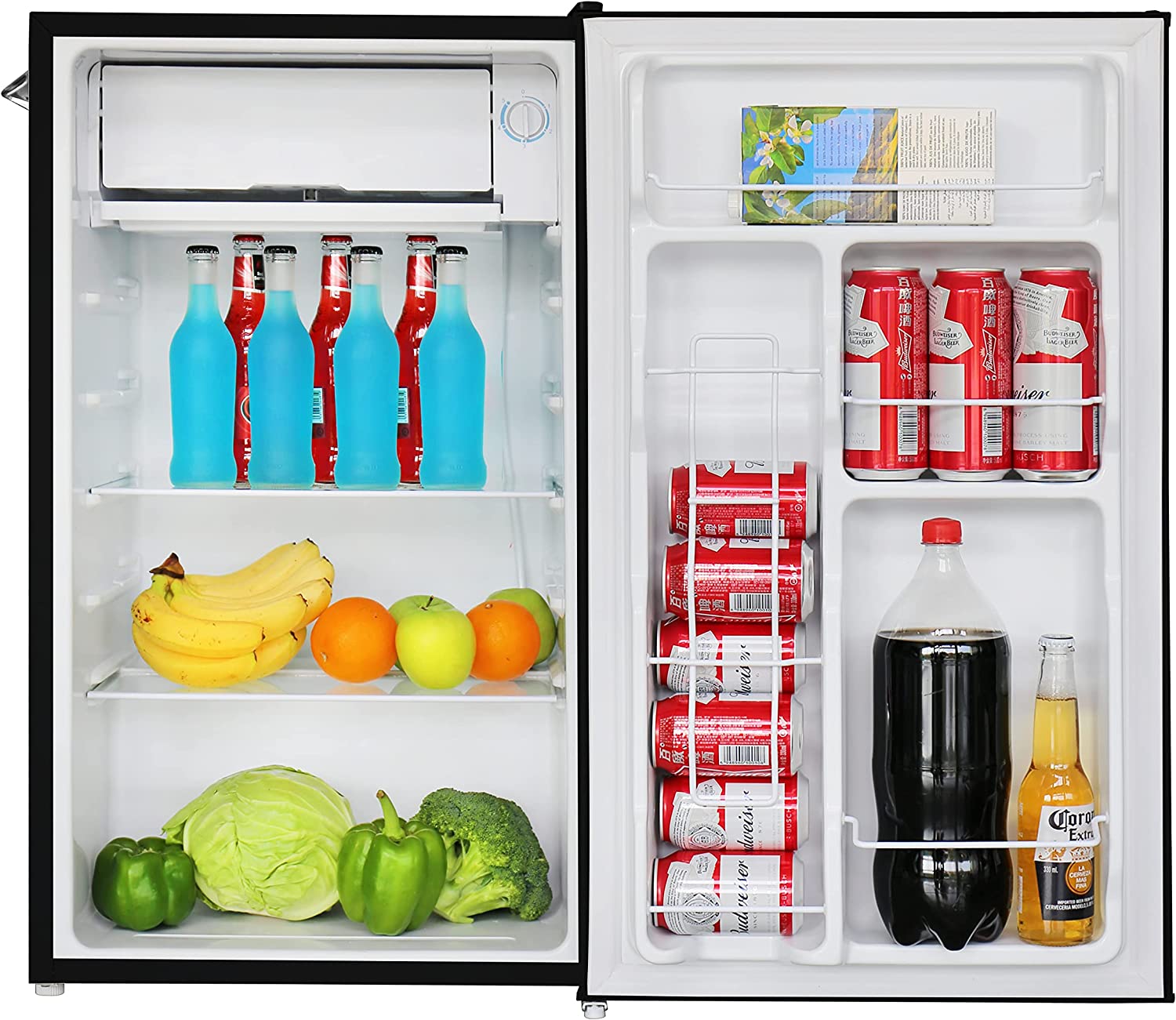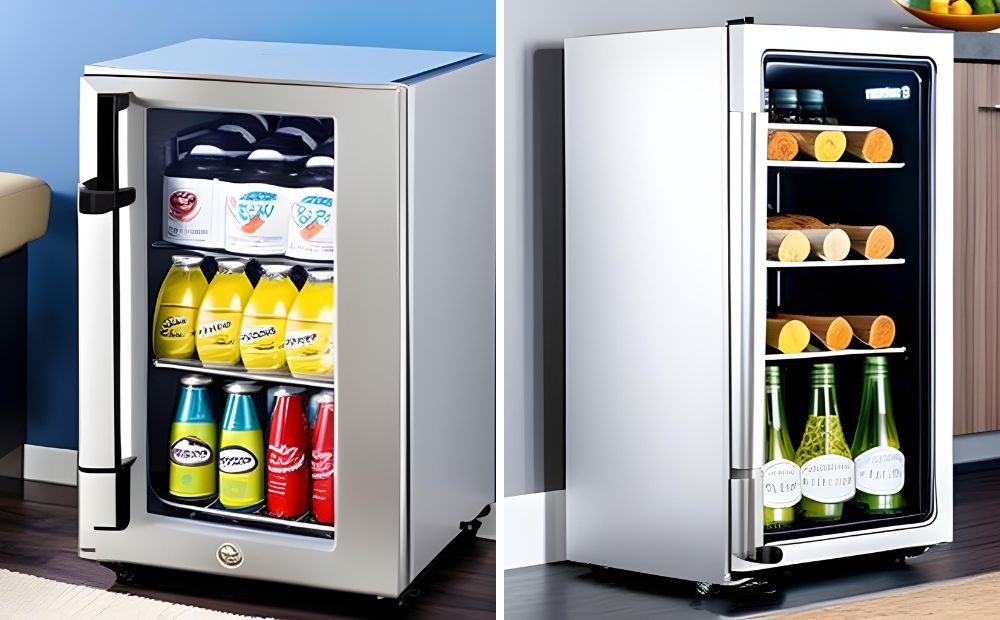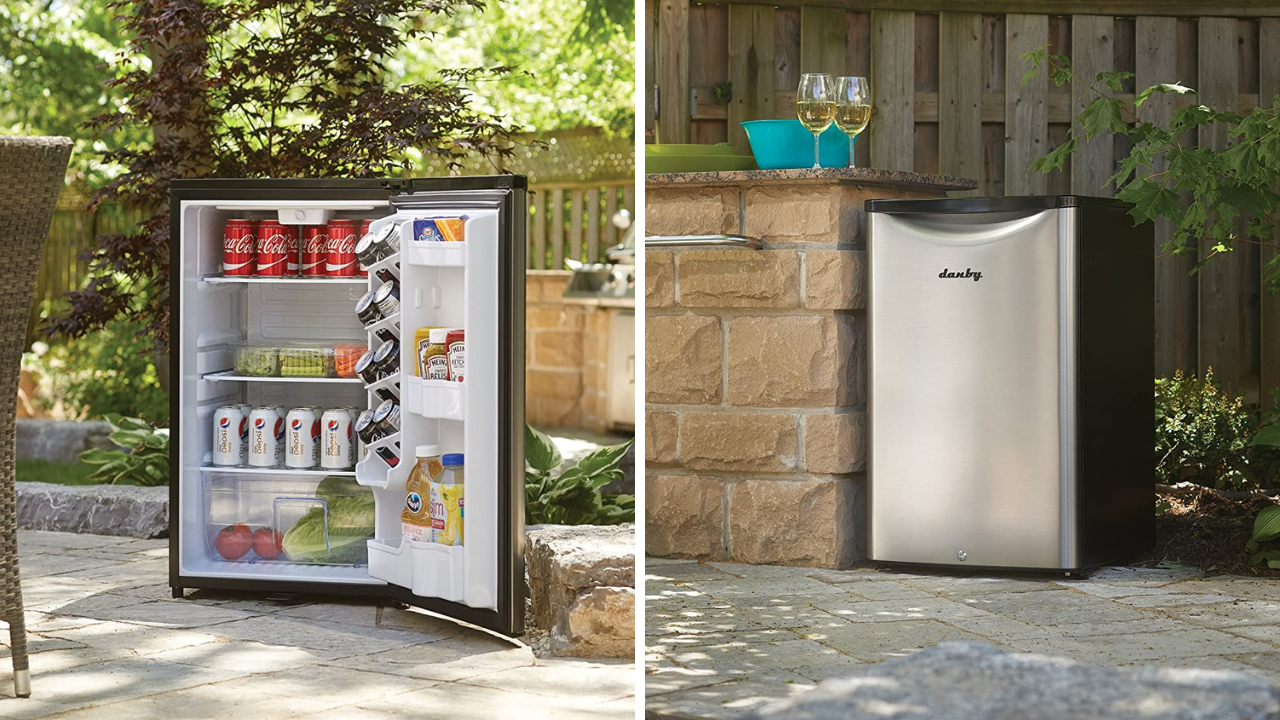When it comes to compact and convenient refrigeration, mini fridges are a popular choice. They are versatile, fitting into various spaces like dorm rooms, offices, garages, or even bedrooms.
However, one question that often arises when moving or transporting these appliances is, "Can you lay a mini fridge on its side?"
The answer to this question is crucial (it is not recommended) as it directly impacts the lifespan and functionality of the appliance.
Proper handling of mini fridges is essential to prevent any potential damage. It's not just about the exterior aesthetics; the internal components, especially the compressor, can be adversely affected if the appliance is not handled correctly.
Therefore, understanding the correct positioning of a mini fridge during transportation is vital.
- Always keep a mini fridge upright, especially during transportation, to avoid damaging the compressor and cooling system.
- Laying a mini fridge on its side can cause the compressor oil to flow into the cooling lines, potentially leading to overheating and failure.
- If unavoidable, limit the time a mini fridge is on its side, handle it gently, and wait at least as long as it was on its side before plugging it in, ideally 24 hours.
- Understanding the function of a mini fridge's compressor and refrigerant helps in proper handling and maintenance, extending its lifespan and efficiency.
What is a Mini Fridge?

A mini fridge, also known as a compact refrigerator, is a small cooling appliance that provides the same functionality as a regular refrigerator but in a much smaller size.
Its compact size makes it an ideal choice for spaces where a full-sized refrigerator would be impractical.
Mini refrigerators come in various types, each designed to cater to specific needs. Some common types include:
Under Counter Mini Refrigerators: These are designed to fit seamlessly under a counter, making them perfect for small kitchens or bar areas.
Cube Mini Refrigerators: As the name suggests, these are cube-shaped and are among the smallest and most portable types.
Mid-Size Mini Refrigerators: These offer more storage space than cube mini fridges and often come with separate freezer compartments.
Travel Mini Refrigerators: These are designed for portability, often powered by a car's 12V power outlet, making them perfect for road trips or camping.
Understanding the different types of mini refrigerators and their uses can help you make an informed decision when purchasing or handling one.
For more detailed information on how to choose the right mini fridge, check out our blog post on Mini Fridge Review and Buying Guide.
How Does a Mini Fridge Work?
A mini fridge operates on the same basic principles as a standard refrigerator, albeit on a smaller scale.
The cooling process begins with the compressor, the heart of the refrigerator. The compressor is responsible for compressing the refrigerant, a special fluid that absorbs and releases heat, transforming it from a low-pressure gas to a high-pressure gas.
The high-pressure refrigerant then moves through the condenser coils located at the back of the fridge.
As it travels, it loses heat and turns into a high-pressure liquid. This liquid refrigerant then passes through an expansion valve, where it experiences a sudden drop in pressure, causing it to evaporate and become a low-pressure gas.
During this evaporation process, the refrigerant absorbs heat from the inside of the fridge, thereby cooling the interior.
The low-pressure refrigerant gas then returns to the compressor, and the cycle begins anew.
The role of the refrigerant and the compressor is crucial in the cooling process. Any disruption in their function can lead to a decrease in the efficiency of the fridge.
For a more detailed explanation of the cooling process, you can refer to this article on How Does a Refrigerator Work?

Importance of Positioning a Mini Fridge Upright
The positioning of a mini fridge is more important than you might think. Laying a mini fridge on its side can potentially cause damage to the compressor.
This is because the compressor contains oil that is used for lubrication.
When the fridge is upright, the oil stays where it's supposed to be. However, when you lay the fridge on its side, the oil can flow into the cooling lines.
If the oil is not given enough time to drain back into the compressor before the fridge is started, it can be circulated throughout the cooling system, leading to a lack of lubrication in the compressor.
This can cause the compressor to overheat and potentially fail.
Moreover, the gravity plays a significant role in the functioning of the compressor.
The compressor is designed to work in an upright position, and laying the fridge on its side can disrupt its operation.
Therefore, it's always recommended to keep a mini fridge in an upright position, especially during transportation.
If you must lay it on its side, make sure to give it ample time to stand upright before plugging it in. This allows the oil to drain back into the compressor.
Remember, proper handling and positioning of your mini fridge can significantly extend its lifespan and maintain its efficiency.
Can You Lay a Mini Refrigerator on Its Side?
The short answer to the question, "Can you lay a mini fridge on its side?" is no, it's not recommended. As mentioned earlier, the compressor in a mini fridge contains oil that is used for lubrication.
When the fridge is upright, the oil stays in the compressor. However, when the fridge is laid on its side, the oil can flow into the cooling lines.
If the fridge is plugged in before the oil has had a chance to drain back into the compressor, the oil can be circulated throughout the cooling system.
This can lead to a lack of lubrication in the compressor, causing it to overheat and potentially fail.
In addition to potential compressor damage, laying a mini fridge on its side can also cause the refrigerant to flow into areas where it's not supposed to be.
This can lead to poor cooling performance and can even cause the fridge to stop working altogether.

How to Safely Transport a Mini Fridge
Transporting a mini fridge requires careful handling to avoid any potential damage. Here is a step-by-step guide on how to do it:
Unplug the Fridge: Always unplug the fridge a few hours before moving it to allow it to reach room temperature.
Empty the Fridge: Remove all items from the fridge to prevent them from moving around and causing damage during transportation. This includes the glass shelves.
Secure the Doors: Use moving straps or bungee cords to secure single or French doors and prevent them from swinging open during transportation.
Use a Dolly: A dolly can make the process of moving the fridge much easier and safer. Make sure to secure the fridge to the dolly with straps.
Keep the Fridge Upright: The fridge should sit upright as much as possible. If you absolutely must tilt it, try to keep the angle as small as possible and don't lay it completely on its side.
Let the Mini Fridge Stand Upright: If the fridge was tilted during transportation, let the mini fridge sit upright for at least the same amount of time it was tilted before plugging it in. This allows the oil to drain back into the compressor.
Remember, taking the right precautions during transportation can help prolong the lifespan of your mini fridge and keep it functioning efficiently.
For more tips on moving heavy appliances, check out this Guide on Moving Appliances.
What to Do If You Must Lay a Mini Fridge on Its Side
While it's not recommended to lay a mini fridge on its side, there may be situations where it's unavoidable. If you find yourself in such a situation, here are some guidelines to minimize potential damage:
Limit the Duration: Try to keep the duration that the fridge is on its side as short as possible. The less time it spends on its side, the less chance there is for the oil to flow into the cooling lines.
Handle with Care: Be gentle when laying the fridge on its side and when returning it to its upright position to avoid jostling the internal components.
Wait Before Plugging In: This is perhaps the most crucial step. If the fridge has been on its side, you should wait at least the same amount of time it was on its side before plugging it in. This allows the oil to drain back into the compressor. However, a safe rule of thumb is to wait 24 hours before plugging it in.
Are you looking for a fridge for your outdoor space? Check out our article on the Best Outdoor Mini Fridge Picks!

Or if you need one for your bedroom then our article on the best Bedroom Mini Fridge may be of interest to you.

FAQs
Why can't you lay a fridge on its side?
Laying a fridge on its side can cause the oil in the compressor to flow into the cooling lines, which can lead to a lack of lubrication in the compressor and potential overheating and failure.
How long should you wait to plug in a fridge after moving it?
If the fridge has been on its side, you should wait at least the same amount of time it was on its side before plugging it in. However, a safe rule of thumb is to wait 24 hours or more than day.
Can laying a fridge on its side damage it?
Yes, laying a fridge on its side can potentially damage the compressor and affect the fridge's cooling performance.
How do you move a mini fridge short distance?
Moving a mini fridge a short distance is relatively easy and can be done without professional help. First, make sure to empty the fridge of all food and drinks. Then, secure the door with tape or a bungee cord to prevent it from opening during the move.
Next, tilt the fridge back onto its wheels and use a dolly or hand truck to move it. If you don't have access to a dolly, you can carefully lift the fridge and carry it with two people. Make sure to keep the fridge in an upright position and level during the move to avoid any spills.
What happens if you plug in a mini fridge too soon after moving it?
Plugging in a mini fridge too soon after moving it can cause damage to the compressor and other components of the mini fridge. When you move a mini fridge, the oil in the compressor can become displaced and can potentially get into the refrigerant lines.
If the mini fridge is plugged in too soon, the oil can clog the lines and cause damage to the compressor. It's important to wait at least 24 hours after moving a mini fridge before plugging it in to allow the oil to settle back into the compressor. Even better if you can wait more than a day.
Remember, when it comes to handling and transporting your mini fridge, it's always better to be safe than sorry. Proper care can ensure the longevity and efficiency of your appliance.










